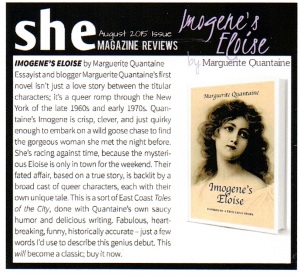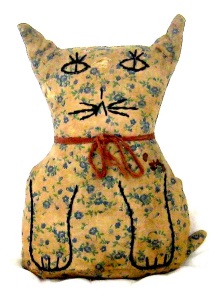
Marion Deyo didn’t start out as my friend, or exactly finish up that way. And yet, twenty years after our final exchange, the ending to our story still astounds me.
It will you, too.
We met in 1966, when I was a student at the American Academy of Dramatic Arts, desperately searching for a different dream. It’s not that I didn’t enjoy acting. I did. In fact, my audition instructor, the late great Jessica Tandy, said I had the natural talent to guarantee a bright future in the theater.
But I knew I didn’t have the personality for it — especially the New York City six-floor walkup, noisy neighbors, nasty bugs part. And, the menial labor between parts part. Or, the suck up and shut up part. The waiting for hours to audition with those who actually wanted to wait for hours to audition part. The desire for fame and fortune part. The tediousness of twiddling thumbs while slow learners remembered their lines part. The talk among actors about nothing but acting part. The throw momma under the bus to get the part part.
It’s why I applaud, but never become a fan of celebrities. I know how hard they worked to get to where they got. I know the bad choices they made. I know of their struggle to get by in the public eye. I know how self-destructive they become when disdaining fellow actors.
But I digress.
One Stouffer’s morning with hot buttered pecan roll and golden coffee in hand, an advertisment in The New York Times classifieds for a media clerk at a Fifth Avenue agency caught my eye. I didn’t know what the job entailed, but figured clerks keep records. Enough said.
Upon entering the office of the department head assigned to interview me, I zeroed in on her desktop nameplate: Marion Deyo.
The older woman (by 21 years) didn’t look up. She didn’t ask me to be seated. She didn’t make any attempt to put me at ease. She even forced me to introduce myself to the top of her bent down head, busily engaged in reading my job application.
“I’ve never heard of anyone with your last name,” she muttered.
“Oh yeah?” I snapped back. “Well I’ve never heard of anyone with your last name, either!” It was a pompous, knee-jerk reaction that I don’t know why I had since — then as now — I’ve yet to encounter a single person outside my immediate family who has my last name.
Suffice to say, the interview ended abruptly and I went on my Mary-quite-contrary way until a week later when I got an early bird phone call saying I was hired.
“How?” I asked. “And, why?”
“No one else applied for job,” replied the person who’d spend five minutes training me later that day.
Technically, Marion was my boss, but she never spoke to me, and made a point of ignoring me whenever we were in the same room, or passed each other in the hall.
Cue Ruth Ruffino (a fictitious name in this, otherwise, true story).
Ruth was a four-foot-eight gentile yenta with coal black hair to match her widow’s wear daily outfits. She had half-dollar size eyes, skin the color of Pattypan squash, and a passive-aggressive control freak personality that she conveyed through a chronically clogged nose. Ruth was just so transparent, so disingenuous, so cloying, so suffocating, so much the type of women I truly didn’t like a lot.
Nevertheless, Ruth was a popular little Miss nicey-nicey, chirpy-chirpy, brown-nosey to everyone, earning her favor by supplying our communal office of eight women with free donuts most mornings and coffee every afternoon.
The thing with women working shoulder-to-shoulder in one room is that their eyes are always peeled and ears cocked, providing the perfect stage and an instant audience for anyone enjoying fanfare, which Ruth invariably made whenever leaving me a box of candy, or personal note, or annoying tchotchke — then yelling from her desk, “Did you get the gift I left?”
Oh-h, I got it all right.
I just didn’t give it. I didn’t eat the donuts, or drink the coffee, or accept the gifts, or read the notes, or engage in conversation — even when she was hovering over me, talking at the top of her elastic sacs.
One day upon returning home from work I found flowers had been delivered, not by a florist, but by Ruth, personally, giving the bouquet and card to my landlord with her delivery instructions.
The next day, she crowed, “I was late to work yesterday morning because I rode all the way up town in order to deliver you flowers. Did you get them?”
“Yes,” I cawed back, “and assured the landlord the flowers were for him and I gave him your telephone number as you requested.”
Soon after, Marion summoned me into her office to tell me she was letting me go for causing too much trouble in her department.
To my chagrin and our surprise, I burst into tears, blubbering my side of the story from the minute Ruth laid eyes on me until my moment of breakdown before her.
Marion listened, stone-faced until I finished. Then she offered me a tissue and said she’d handle it — which she did. But she never said how, we never spoke of it again, and I wasn’t fired.
Hours later Ruth announced her engagement to a dweeby, much taller, older account executive who wore his suspendered pants up around his atrophied pecs; a bloke who’d been transferred to our Chicago office that very same day, taking Ruth to the windy city with him. The other communal room women shunned me afterwards.
Over the next six weeks I was assigned to a task no other employee (past or present) had been able to complete. I tackled it by initiating an unorthodox protocol, earning me a promotion and my own office.
Upon becoming Marion’s executive colleague, the walls came down. We sat together at department head meetings and lunched together regularly. She learned I was single and living in Manhattan. I learned she was single and living with her cousin on Long Island. The weekend she invited me out for a visit began a quintessential friendship lasting for years — right up until the day I discovered the two women weren’t cousins, but a couple.
I had an inkling, but I never completely understood why everything suddenly changed after that. Our daily routine ended abruptly. I ceased being invited to their home. Marion took another job at a different agency. Eventually, so would I.
Over time we continued to touch base, but seldom, until not at all.
I fell in love and my life took many dramatic turns. We ended up living in the same Long Island town as Marion and her partner. The company we launched and grew was in stark contrast to the enterprise they undertook. For fifteen years we rarely crossed paths. In 1990, we semiretired to Florida. They remained on Long Island.
Then in October of 1994 I had a premonition.
…and more
THIS ENTIRE ESSAY CAN BE FOUND IN
Seriously, Mom, you didn’t know?
Click on FREE PREVIEW below for a FREE READ of 3+ chapters.
Marguerite Quantaine Copyright © 2019
If you’re at all enchanted by this story, I promise you’ll be charmed by
Imogene’s Eloise: Inspired by a true-love story.
I welcome your feedback, so go ahead and let me have it by commenting here, or Liking and Sharing this on Facebook.
My heartfelt thanks to you and yours, now and always.
http://www.amazon.com/Imogenes-Eloise-Inspired-true-love-story/dp/0940548011/ref=sr_1_1?s=books&ie=UTF8&qid=1418760488&sr=1-1&keywords=marguerite+quantaine


 The first time I spotted the alligator in the murky waters of a man-made lake framing luxurious condos on one side and a city park on the other, I worried aloud for the safety of the mallards, Muscovy, and white, waddling ducks, the snapping turtles, giant goldfish, flock of pristine egrets, and wading blue heron, making their homes in the marshes there.
The first time I spotted the alligator in the murky waters of a man-made lake framing luxurious condos on one side and a city park on the other, I worried aloud for the safety of the mallards, Muscovy, and white, waddling ducks, the snapping turtles, giant goldfish, flock of pristine egrets, and wading blue heron, making their homes in the marshes there.